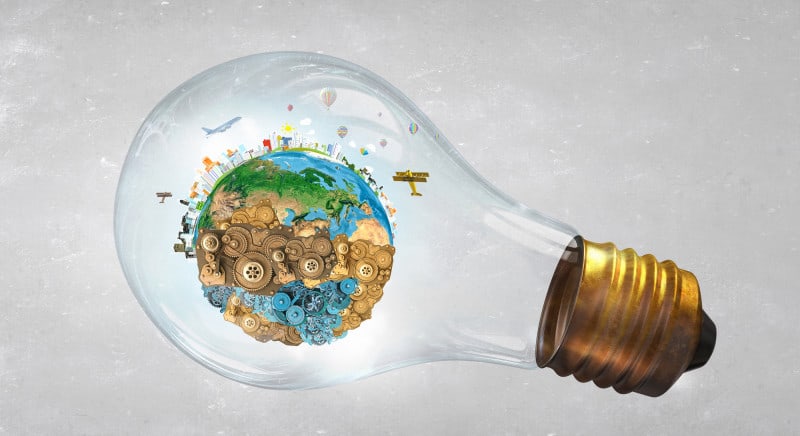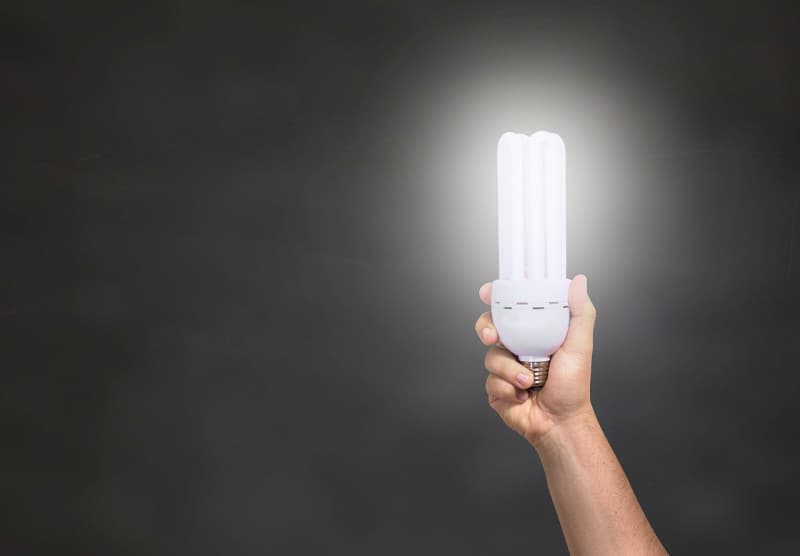We all know how important it is to do our part for the planet.
But what can we do that won’t break the bank, yet still make a positive impact?
You may be wondering how energy-efficient light bulbs help the environment…
Energy-efficient light bulbs help the planet by reducing electricity consumption, lowering greenhouse gas emissions, and conserving natural resources due to their lower energy requirements and longer lifespan.
In this article, I’ll be exploring how energy-efficient light bulbs help the planet and why you should consider using them in your home or business. So let’s dive into it!
We’ll take a look at how energy-efficient lighting works, the environmental benefits of using them, and some tips on making sure you get the most out of your energy-efficient bulbs.
How Energy-Efficient Lighting Works
Lighting is the cornerstone of any home or business. It sets the tone for our living and working spaces, illuminating our lives in more ways than one.
But when it comes to energy-efficient lighting, it can be hard to comprehend just how much of an impact a lightbulb can have on our planet.
LED technology has revolutionized the way we light up our world, while still providing us with superior lumens output that uses minimal power.
If you’re looking to reduce your carbon footprint and make a positive impact on the environment, LED lighting is a perfect solution.
By utilizing this advanced yet simple technology, we are able to get more bang for our buck while decreasing electricity use and greenhouse gas emissions.
LEDs provide clear, bright light with little heat production, meaning you’ll get more out of your lighting but create less waste in the process.
LEDs are an ideal choice for those who want to be responsible stewards of their energy use without sacrificing lighting quality.
These bulbs consume far less energy than their traditional counterparts and last significantly longer too – up to 25 times longer!
Not only does this mean you’ll save money on your energy bill each month, but you won’t have to contribute as much waste from constantly replacing burnt out bulbs either.
Reducing Carbon Emissions
I’m sure we can all agree that reducing carbon emissions is a must in order to help the planet and protect our environment.
Energy-efficient light bulbs are one of many tools that can be used to help reduce those emissions.
Phasing out coal and reducing waste are two key ways in which energy-efficient light bulbs can help the planet.
By replacing traditional incandescent bulbs and halogen lamps with energy-efficient LED lights, it allows for a much greater energy savings due to their higher efficiency.
This means less electricity needs to be produced from burning coal, thus resulting in fewer carbon emissions being released into the atmosphere.
Energy-efficient light bulbs also save money on electricity bills due to their lower wattage requirements and higher efficiency ratings.
Conserving Energy Resources
Energy-efficient light bulbs are a great way to help the planet.
They use less energy than traditional incandescent bulbs and can help us conserve the energy resources that we have.
By using energy-efficient light bulbs, we can reduce our dependence on nonrenewable sources of energy and instead focus on renewable sources of energy like solar, wind, and hydroelectric power.
This is especially important in an era when climate change is a real threat to our planet’s future.
Making the switch to energy-efficient light bulbs can also result in cost savings over time.
While these types of bulbs may be more expensive than regular incandescent bulbs initially, they last much longer and use far less electricity.
This means that you will save money over time by not having to replace your light bulbs as often and by not having such high electricity bills.
The benefits of using energy-efficient light bulbs go beyond just helping the planet and saving money.
They can also provide better lighting quality for your home or office, making them ideal for any environment where visibility is important.
They also tend to be more durable than regular incandescent bulbs, so you don’t have to worry about replacing them as often either.
All in all, energy-efficient light bulbs are a great choice for anyone looking to do their part for the environment while still getting good lighting quality and saving money in the long run.
Tips for Optimizing Efficiency
Switching to energy-efficient light bulbs is an easy and cost-effective way to help the planet.
Not only do energy-efficient light bulbs use less electricity, but they also last longer, so you need to replace them far less often.
Here are some tips for optimizing efficiency:
Smart Meters:
- Invest in a smart meter that accurately tracks how much energy your home uses.
- Regularly review your energy usage data and look for opportunities to reduce it.
- Consider ways of conserving energy, such as turning off lights when you leave a room or unplugging devices when they’re not in use.
Solar Panels:
- Installing solar panels is a great way to reduce your carbon footprint while saving money on your electric bill.
- Make sure you research potential providers before investing in solar panels to get the best deal possible.
- Consider taking out a loan or applying for government incentives to help with the cost of installation.
By making small changes like these, we can all do our part to save the planet and reduce our household bills at the same time!
The Big Picture: Impact On The Planet
Now that we’ve discussed the tips for optimizing efficiency, let’s take a look at the big picture: the impact on the planet of energy-efficient light bulbs.
Energy-efficient light bulbs are an important part of reducing our environmental impact by helping to reduce waste and save money.
By replacing traditional incandescent bulbs with energy-efficient LED or CFL bulbs, we can cut our electricity consumption by up to 80%.
This means less electricity needs to be generated, resulting in a decrease in carbon dioxide emissions from power plants.
Energy-efficient lights last much longer than traditional incandescent lights. This means fewer bulbs need to be disposed of, resulting in a reduction in landfill waste.
The money saved on energy bills can also be used for other things that help reduce our environmental impact, such as investing in renewable energy sources or buying eco-friendly products.
It’s clear that energy-efficient light bulbs have a positive impact on both the environment and our wallets.
With their long lifespan and low electricity usage, they are one of the easiest ways to cut down on our carbon footprint and save money at the same time.
Conclusion
We can all do our part to help the planet by making the switch to energy-efficient lighting.
By utilizing this technology, we are actively reducing our carbon footprint and conserving valuable energy resources.
The impact of our collective efforts is monumental, and will have a lasting positive effect on the planet for generations to come.
Let’s work together to make a brighter future – one light bulb at a time!




